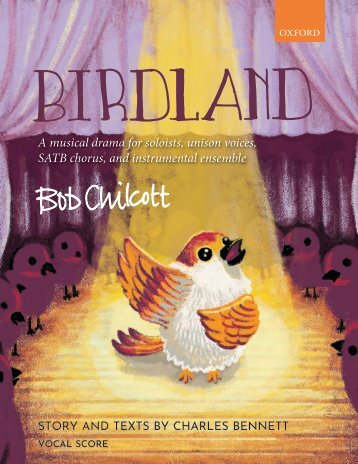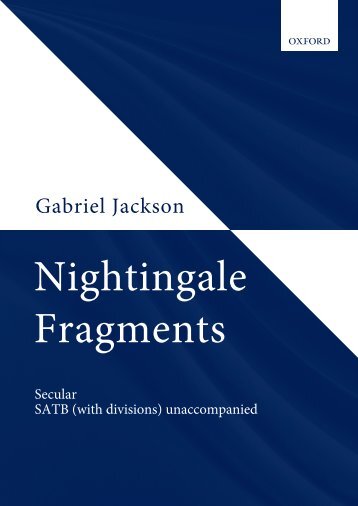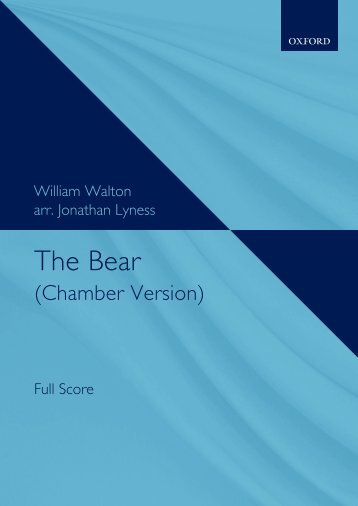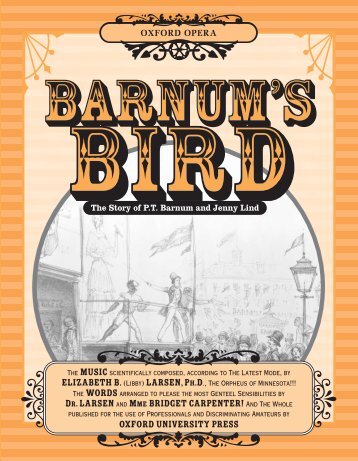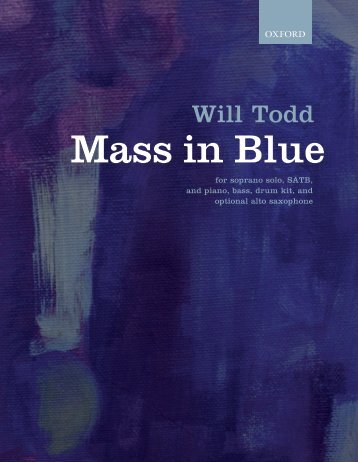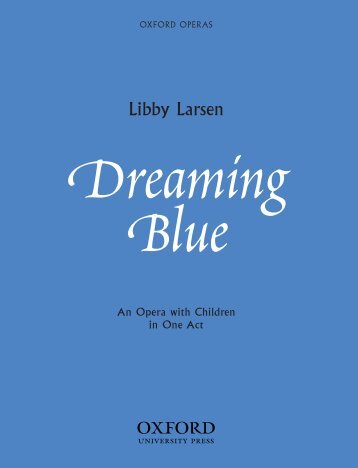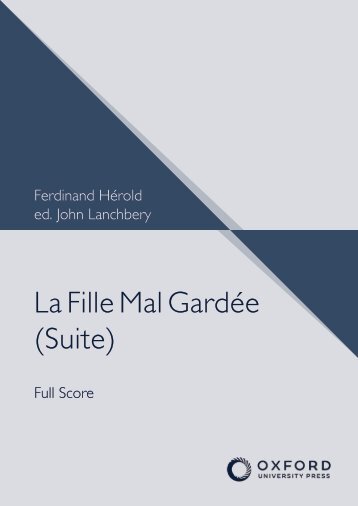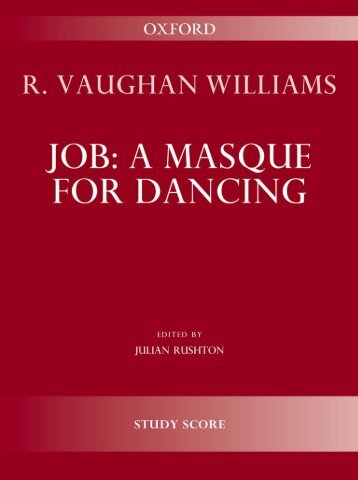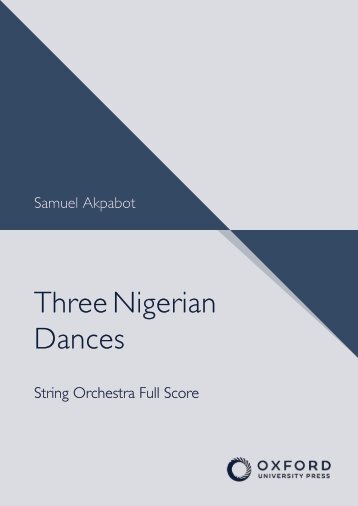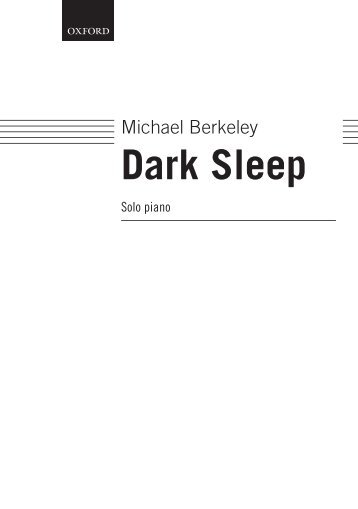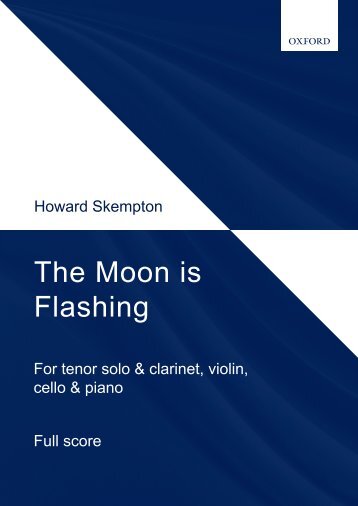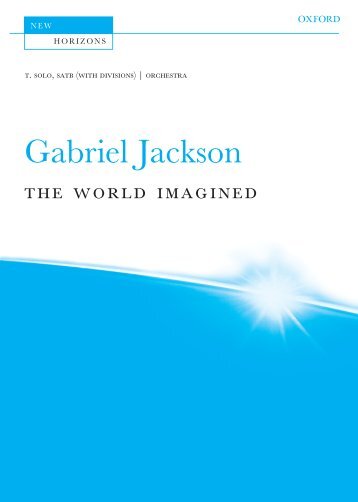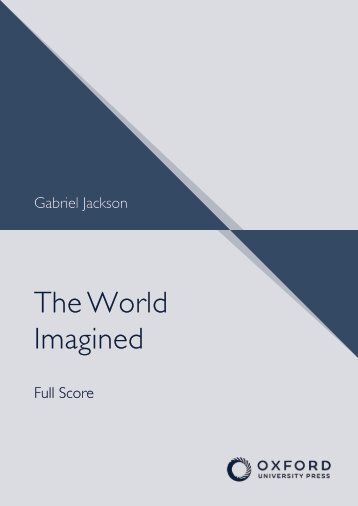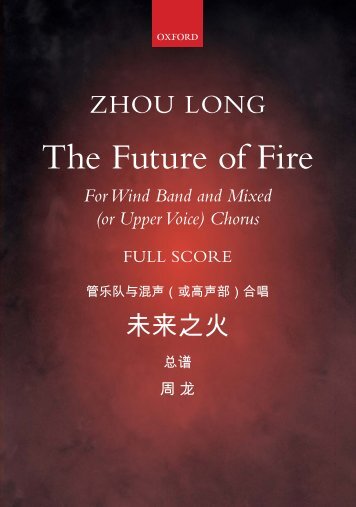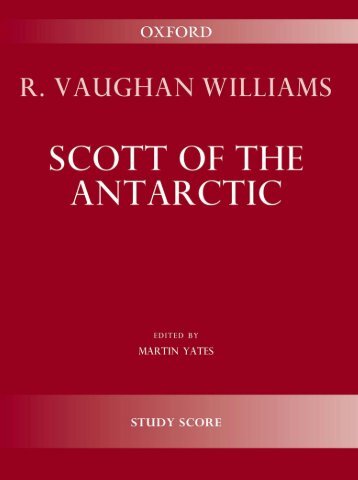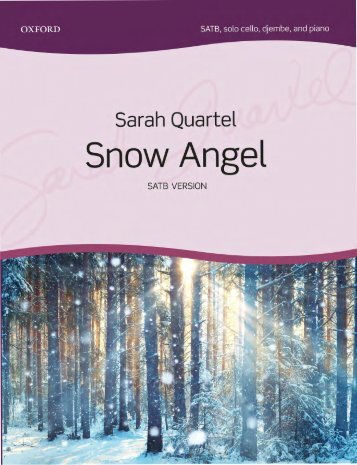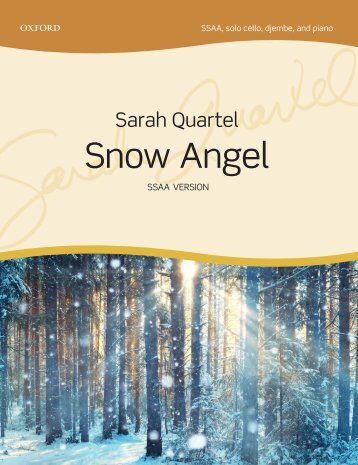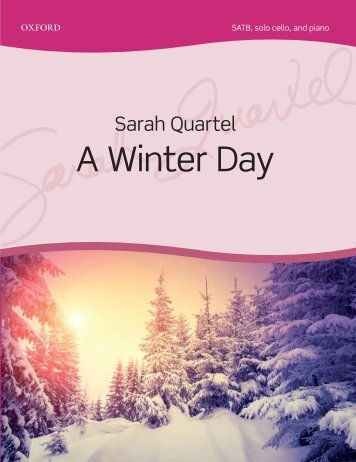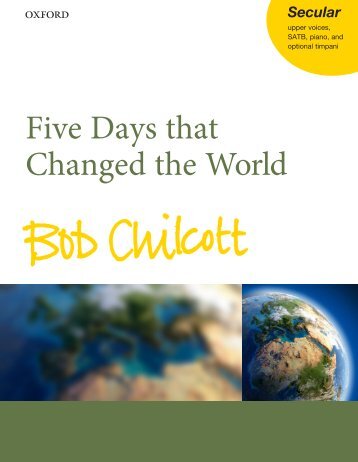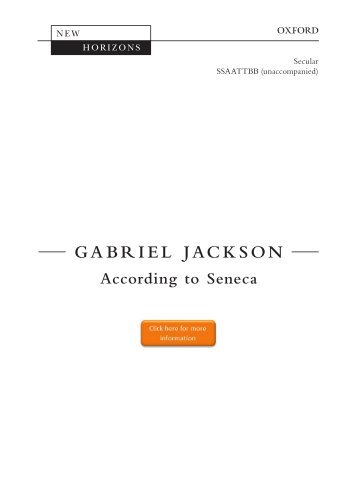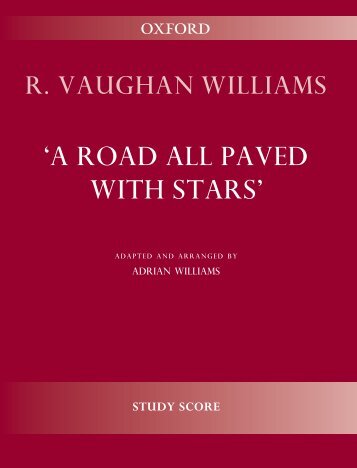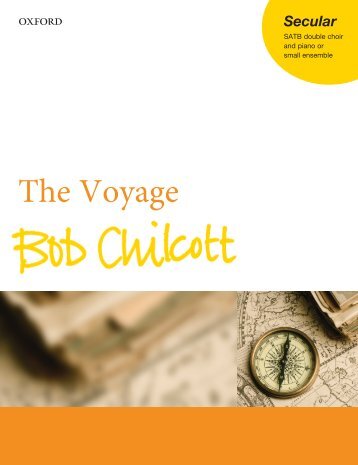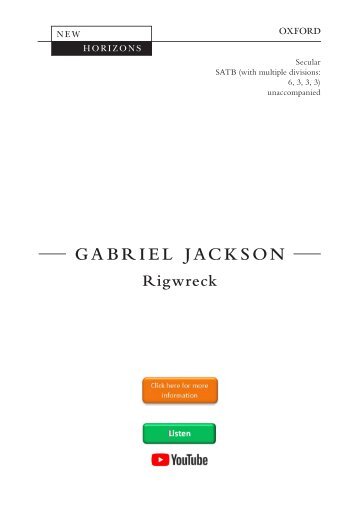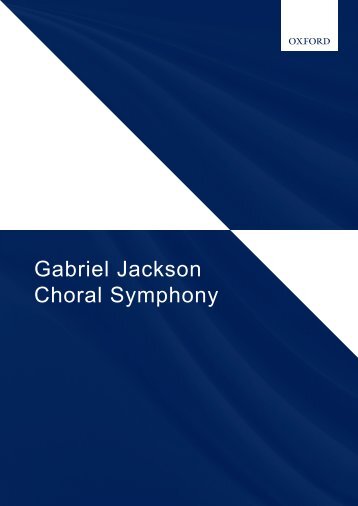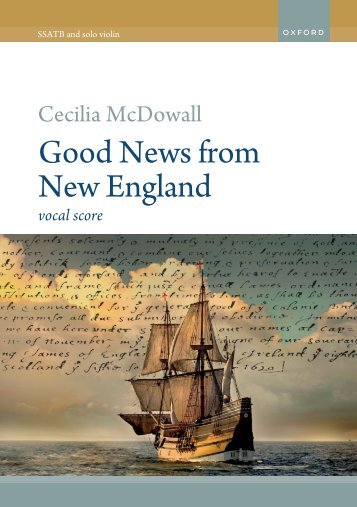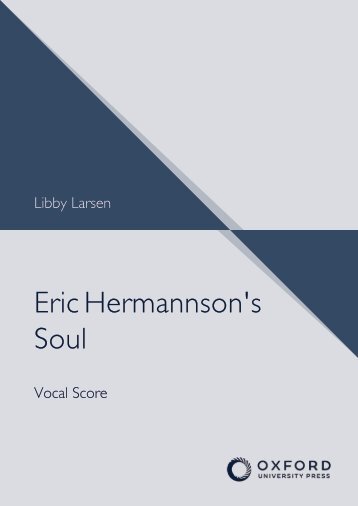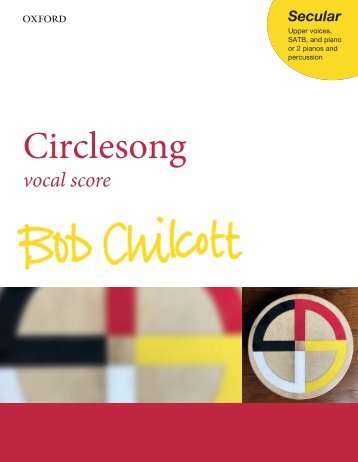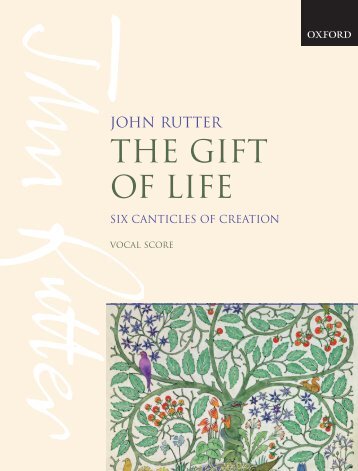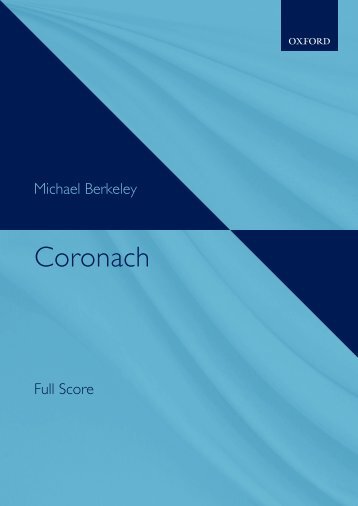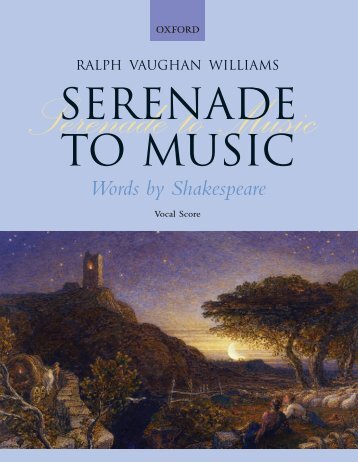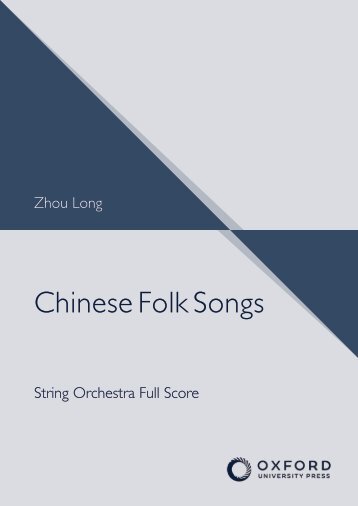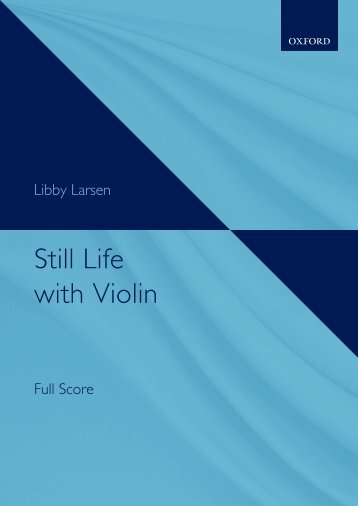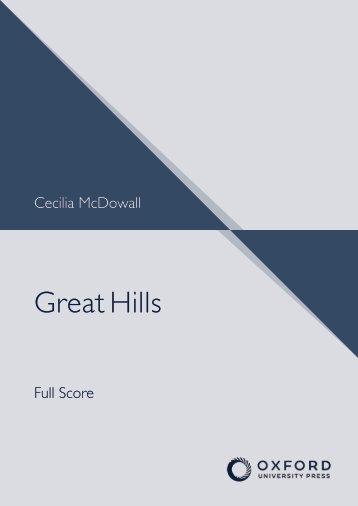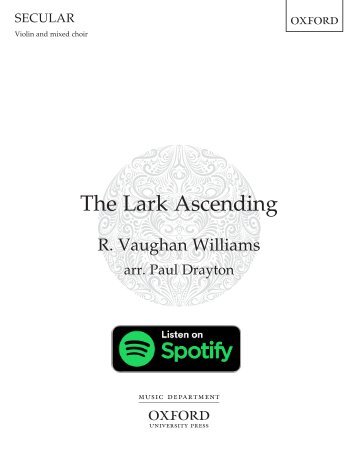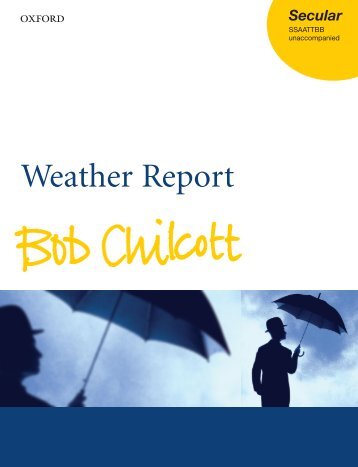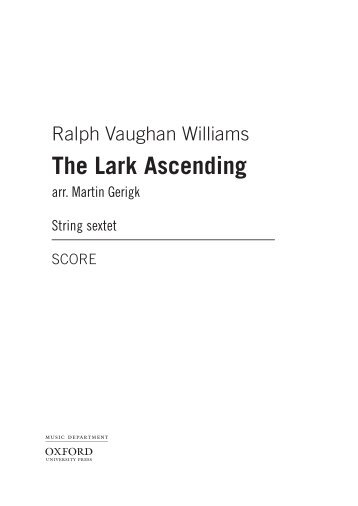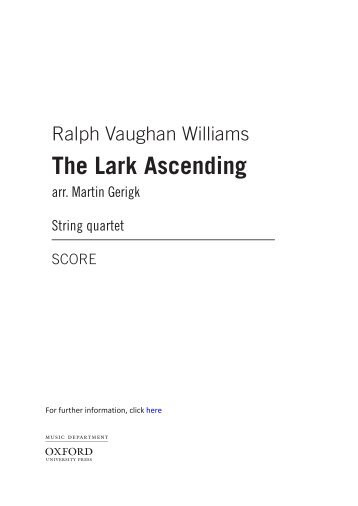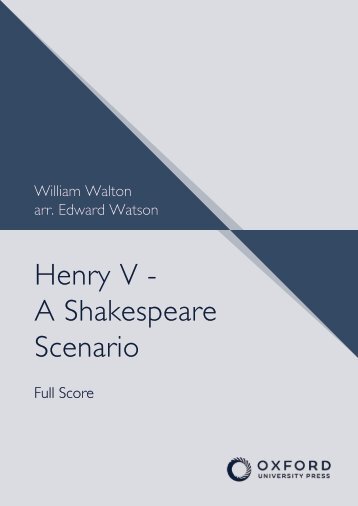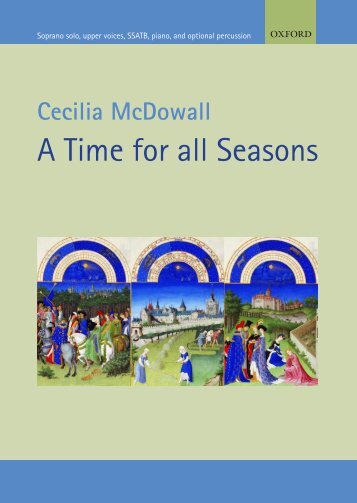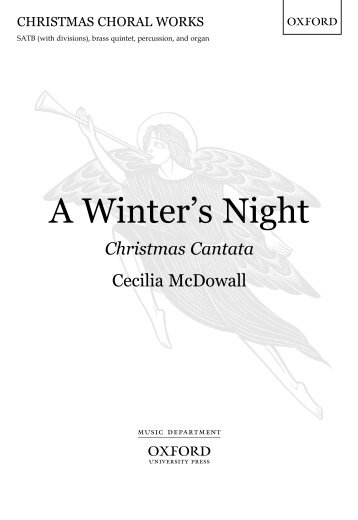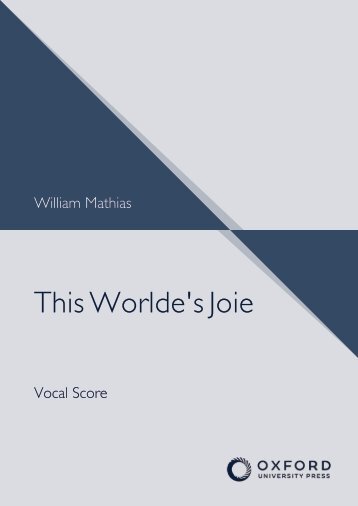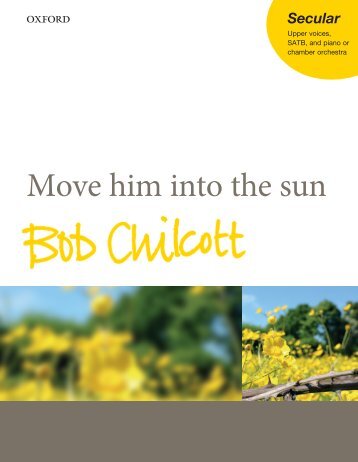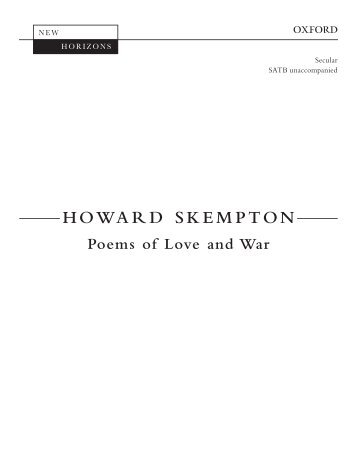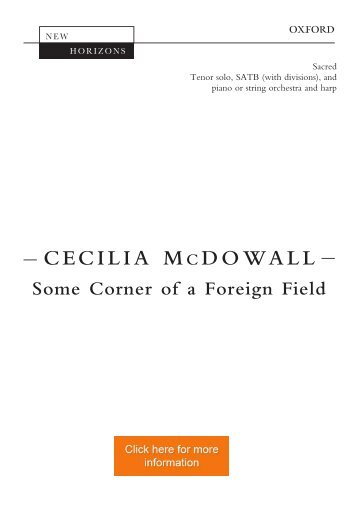
Oxford Programming by Theme
Oxford University Press is proud to publish musical works by some of the most significant composers of the 20th and 21st centuries, with a catalogue that includes a broad range of choral, orchestral and chamber music.

Themes
Select a theme from the list below to view playlists and perusal scores.
- Animals
- Colours
- Dances
- Day and Night
- Elements: Earth
- Elements: Fire
- Elements: Ice
- Elements: Water
- Historical Figures
- Journeys and Transport
- Life and Death
- Light and Dark
- Music about music and sound
- Myths, Legends, and Folktale
- Nature
- Royalty and Ceremony
- Rivers and Oceans
- The Seasons
- War and Conflict
R. Vaughan Williams - Job: A Masque for Dancing
- Text
- Orchestra
- Ballet
- Rushton
- Job
- Williams
- Oxford
- Oup
preface The conception
preface The conception of Job was a family affair. The idea came from Geoffrey Keynes, surgeon and Blake scholar, in 1927 (the centenary of William Blake’s death). Keynes consulted his sister-in-law, the recently widowed artist Gwendolen Raverat (née Darwin). 1 The composer they approached, Ralph Vaughan Williams, was her second cousin. Raverat drew up an extended scenario, derived from Blake’s series of illustrations inspired by the Old Testament Book of Job. 2 She translated the scenario into French and showed it to Boris Kochno at Diaghilev’s Ballets Russes. It is not clear whether Diaghilev himself saw it, but the scenario was rejected as ‘too English’ and ‘old-fashioned’. 3 Vaughan Williams expressed some relief (‘not sour grapes’) at this rejection. He insisted—reasonably enough in relation to this subject, and to Blake’s conception—that the work be subtitled ‘A Masque for Dancing’; he felt uneasy about the word ‘ballet’ which, he remarked to the author and critic Edwin Evans, had ‘acquired unfortunate connotations of late years to me’ (December 1930). 4 The choice of ‘masque’ (a genre that usually involves vocal music as well as dancing and mime) may have been intended in the composer’s mind to locate the work within a tradition he considered English, rather than the cosmopolitanism represented by the Ballets Russes. The Elizabethan/Jacobean masque is evoked not only in the work’s tableau-like construction (which also derives from Blake) but by the use of dances such as Saraband, Minuet, Pavane, and Galliard. 5 The visual element was of the highest importance, and Vaughan Williams’s autograph score includes small reproductions of Blake’s illustrations, which are referred to throughout in the stage directions. 6 Vaughan Williams quickly became absorbed in the project; indeed in his enthusiasm, according to Keynes, ‘he became rather difficult to control’. 7 But he had more theatrical experience than his collaborators and was fully justified in taking his own decisions about the scenario. Comparison of surviving versions by Alison Sanders McFarland shows that the composer adjusted the order of scenes implied by Blake’s sequence, avoiding the tautology of having Job twice awakened from sleep. 8 Job’s sin of material satisfaction (explicit in Raverat’s version) licenses Satan’s intervention; she and Keynes were influenced by the interpretation of Blake’s Illustrations of the Book of Job (itself already a departure from the biblical narrative) by the Blake scholar Joseph Wicksteed, by which God and Satan are, in effect, de-mythologized to become aspects of Job himself. 9 However intellectually cogent, this interpretation does not lend itself to theatrical presentation, where supernatural characters and action are perceived as ‘real’. Vaughan Williams adopted the Blake–Keynes designation of Job’s ‘comforters’ as ‘wily hypocrites’; rather than the irritating friends of the Bible, they become agents of Satan, as is marked by the stage direction and the music. Nevertheless, the masque requires some extra-textual knowledge to be fully understood. Elihu’s dance is an effective musical contrast at this point, but does not express the sense of his intervention; his ‘wrath was kindled’ against Job and his comforters (Job 32:2), and his arguments induce Job to repent his worldliness. The conception of Satan derives from Blake. He appears to win the wager with God, only to be rebuffed; so evocative of evil is his music that this seems inevitable, if unfair. Instead of the full restoration of Job’s fortunes implied in the Bible, the masque ends on a pastoral, even nostalgic, note, with Job’s daughters comforting his old age. Compared to the extended arguments of the original, and even Blake’s and Raverat’s thinking, Vaughan Williams’s scenario is theologically less complex, aiming to heighten emotion and contrast to better theatrical effect, the music embracing a wider stylistic range than is normally found in his orchestral works. for online perusal only 1 Full documentation of Job was assembled in the Journal of the RVW Society, 19 (October 2000): Deborah Heckert, ‘“A Typically English Institution”: A Context for Vaughan Williams’s Masques’, pp. 4–6; Sir Geoffrey Keynes, ‘The Origins of Job’, pp. 16–17; Frank W. D. Ries, ‘Sir Geoffrey Keynes and the Ballet Job’, pp. 18–22 (based on interviews and including correspondence of Raverat, Vaughan Williams, Ninette de Valois, and Lydia Lopokova); Stephen Connock, ‘Gwen Raverat: Her Role in Job’, p. 22. This issue of the journal also contains a comprehensive review of recordings by William Hedley, and illustrations from stage productions. 2 William Blake, Illustrations of the Book of Job (London as the Act directs March 8: 1825 by William Blake Fountain Court Strand). The watercolours can be viewed at www.themorgan.org/ collection/William-Blakes-World/18, and at www.blakearchive. org/work/but550. The engravings published in 1826 can be found at www.blakearchive.org/work/bb421. The engravings may also be seen in the Blake Room at Tate Britain, Millbank, London. 3 Frances Spalding, Gwen Raverat: Friends, Family & Affections (London: Harvill, 2001), pp. 332–7. 4 Letters of Ralph Vaughan Williams 1895–1958, ed. Hugh Cobbe (Oxford: Oxford University Press, 2008), pp. 183–4. 5 Heckert (see note 1). 6 In the autograph, however, the illustrations are not numbered according to the system used in the score. 7 Keynes (see note 1), p. 16. 8 Alison Sanders McFarland, ‘A Deconstruction of William Blake’s Vision: Vaughan Williams and Job’, in Vaughan Williams Essays, ed. Byron Adams and Robin Wells (Aldershot: Ashgate, 2003), pp. 29– 53; the appendix contains all surviving scenarios, two of which, by Keynes and Vaughan Williams, are presented by Michael Kennedy, A Catalogue of the Works of Ralph Vaughan Williams (2nd edn, Oxford: Oxford University Press, 1996), pp. 132–5. 9 Joseph N. Wicksteed, Blake’s Vision of the Book of Job (London: J. M. Dent, 1910); McFarland (see note 8), p. 31. v
Composition and Performance The music was begun in 1927. Vaughan Williams admitted that he was in danger of composing it before the scenario was finalized. In August he told Raverat that he would not take too much account of Wicksteed’s interpretation. 10 The music was drafted in a score, now largely missing, for two pianos. As usual, he discussed his work in progress with Gustav Holst: ‘I should be alarmed to say how many “Field Days” we spent over it’. 11 Rejection by the Ballets Russes may have convinced him that Job had a more promising future in the concert hall, and accordingly he scored it for too large an orchestra for a normal theatre pit. The first performances were not staged. The premiere, as a programmatic concert work, was given during the Norfolk and Norwich Festival on 23 October 1930, in St Andrew’s Hall, Norwich, with the Queen’s Hall Orchestra conducted by the composer. The first London performance was a studio broadcast, accessible only in the London region, by the BBC Symphony Orchestra on 13 February 1931, again conducted by the composer. The first public concert performance in London followed on 3 December 1931, after the first stage performances; it was given by the orchestra of the Royal Philharmonic Society, conducted by Basil Cameron, in the Queen’s Hall. Meanwhile the first staged performances had taken place on 5 and 6 July 1931 in the Cambridge Theatre, London, which had opened the previous September. Job was one of the new works performed under the auspices of the Camargo Society, active from 1930 to 1933. The society’s aim was to develop a national ballet company, with strong influence from the Ballets Russes (Diaghilev having died in 1929). Among those involved were Philip J. S. Richardson, Arnold Haskell, the economist John Maynard Keynes (brother of Geoffrey), and his wife, the ballerina Lydia Lopokova. Vaughan Williams attributed their acceptance of his work to Holst. 12 Writing to Edwin Evans, he insisted on full acknowledgement of Keynes’s and Raverat’s involvement, with the stipulation that he himself must be allowed to veto anything that ‘to my mind does not agree with my music’. 13 In March 1931 he wrote to Adrian Boult, to whom the work was eventually dedicated, hoping that he might conduct it, and mentioning that the piano reduction by Vally Lasker was under way, adding with characteristic (and unnecessary) self-deprecation that ‘the score is illegible’. 14 It was, however, the composer and conductor Constant Lambert who directed the stage premiere of Job. Among the cast, God is not listed as a character, being replaced by ‘Job’s Spiritual Self’, an interpretation closer to Blake and to Raverat’s scenario. Making a fortuitous link with the Ballets Russes, Anton Dolin danced Satan. 15 Raverat designed the sets and costumes after Blake, with some necessary compromise. 16 The choreography was by Ninette de Valois. The production transferred to the Sadler’s Wells company and their first performance was at the Old Vic theatre on 22 September 1931. In 1933 the Camargo Society’s repertoire was merged with that of the Vic-Wells Ballet (which subsequently became the Royal Ballet), and Job was performed several times during the next few years. Following the company’s move to the Royal Opera House, Covent Garden, the work was revived in 1948 with new sets and costumes (which Keynes disliked), designed by John Piper. A revival in 2006 restored Raverat’s designs. To accommodate a pit orchestra, Lambert had made a reduction for ‘theatre orchestra’ prior to the Cambridge Theatre performance (see Sources). When Lambert died in August 1951, Vaughan Williams wrote a reminiscence for Hubert Foss, including a specific tribute to Lambert’s conducting of Job and his orchestral reduction, ‘to the then dimensions of Sadler’s Wells [sic]’. He praised the use of harp in the bass register, and added: ‘These rehearsals were the only occasions on which I knew him really worried and nervous. Rehearsal time was short, the orchestra was difficult, the clarinet said he could not, according to his trade union rules, double clarinet and saxophone, & so on, but he [Lambert] triumphed over it all’. 17 Opera houses capable of mounting Wagner, however, can accommodate the full orchestral version. That Lambert’s arrangement has the same number of bars as the printed full score suggests that Vaughan Williams had already made the cuts that are visible in the autograph. Yet after the first stage performance he wrote to Raverat, congratulating her on a Spectator review, and suggesting that he was reluctantly prepared to make a further cut in Scene IV: ‘If we cannot have the procession I am cutting a good deal of the music there’. 18 He expressed reservations about the choreography, and was ‘unrepentant’ about his decision to order the scenes differently from the Bible and from Blake. He suggested that they might experiment with reversing the order of Scenes IV and V, to accord with Blake’s sequence; this is given as an alternative within the printed score and piano reduction, but Vaughan Williams’s ordering, with the dream foretelling news of disaster, seems preferable from a dramatic point of view. for online perusal only The Orchestra Wind Instruments When scoring for a large orchestra, Vaughan Williams characteristically offered reductions that might help obtain performances, 19 providing cues in other parts for instruments that might not be available: flute in G, saxophone, 10 Letters, p. 158. 11 Ralph Vaughan Williams, National Music and Other Essays, 2nd ed. (Oxford: Clarendon Press, 1996), p. 194. 12 Ibid. 13 Letters, pp. 183–4. 14 Letters, p. 189. 15 Michael Kennedy lists the full cast in Catalogue, p. 131. 16 Spalding, Gwen Raverat, p. 335. 17 Letters, pp. 491–2. 18 Letters, pp. 192, 194. It seems this procession was indeed cut; Ries, ‘Sir Geoffrey Keynes and the Ballet Job’, p. 21. 19 Letters, p. 183. vi
- Page 2 and 3: . VAUGHAN WILLIAMS for online perus
- Page 4 and 5: Contents Preface page v Sources Tex
- Page 8 and 9: ass clarinet, contrabassoon, 3rd tr
- Page 10 and 11: considered my servant Job?’. Titl
- Page 12 and 13: 106/75-7 Cl.: no tenutos in aut 106
- Page 14 and 15: Vln. I Vla. Vcl. B.Cl. A.Sax. Bsn.
- Page 16 and 17: Fl. Ob. C.A. Cl. (Bb) B.Cl. Bsn. Cb
- Page 18 and 19: Fl. Ob. 1 2 3 1 2 5 ° & bb & bb œ
- Page 20 and 21: Job a masque for dancing for online
- Page 22 and 23: Flutes Alto Flute Oboes Cor Anglais
- Page 24 and 25: 3 Here the distant landscape lights
- Page 26 and 27: 5 Fl. A.Fl. 1 2 19 p a 2 3 3 take F
- Page 28 and 29: 7 Fl. C.A. Cl. (Bb) B.Cl. 43 ’ 3
- Page 30 and 31: 9 Fl. Ob. C.A. 1 2 3 1 2 72 Job sta
- Page 32 and 33: Fl. A.Fl. Ob. C.A. Cl. (Bb) B.Cl. B
- Page 34 and 35: 13 Fl. 1 2 88 stringendo 5 Satan ap
- Page 36 and 37: 15 Fl. 1 2 110 6 p Saraband of the
- Page 38 and 39: 17 Fl. 1 2 3 128 pp 8 God arises in
- Page 40 and 41: 19 Picc. Fl. Ob. C.A. Cl. (A) B.Cl.
- Page 42 and 43: 21 Picc. Fl. Ob. C.A. Cl. (A) B.Cl.
- Page 44 and 45: Picc. 171 10 23 Fl. Ob. 1 2 1 2 C.A
- Page 46 and 47: Scene II Satan’s Dance of Triumph
- Page 48 and 49: 27 Picc. 23 p Fl. Ob. 1 2 1 2 p p C
- Page 50 and 51: 29 Picc. 40 ff ff dim. pp Fl. Ob. C
- Page 52 and 53: 31 Picc. 57 ff Fl. 1 2 a 2 ff Ob. 1
- Page 54 and 55: Picc. Fl. Ob. C.A. Cl. (A) B.Cl. Bs
- Page 56 and 57:
35 Picc. 92 f Moderato alla marcia
- Page 58 and 59:
37 Picc. Fl. Ob. 1 2 1 2 107 a 2 a
- Page 60 and 61:
39 117 18 Satan climbs up to God’
- Page 62 and 63:
41 Picc. 137 19 2 2 2 fff Satan kne
- Page 64 and 65:
43 157 The hosts of Hell enter runn
- Page 66 and 67:
Scene III Minuet of the Sons of Job
- Page 68 and 69:
Fl. Ob. C.A. Cl. (A) B.Cl. Bsn. Hrn
- Page 70 and 71:
Picc. Fl. Ob. C.A. Cl. (A) B.Cl. Bs
- Page 72 and 73:
51 65 Picc. pp fff Fl. 1 2 pp a 2 f
- Page 74 and 75:
53 Picc. 83 dim. 2 pp take Fl. 3 2
- Page 76 and 77:
Scene IV Job’s Dream 55 Violin I
- Page 78 and 79:
Picc. 33 26 57 Enter Satan. Tableau
- Page 80 and 81:
59 45 27 Enter Famine. Picc. p pp F
- Page 82 and 83:
61 58 28 Enter Battle, etc. Picc. 3
- Page 84 and 85:
63 Picc. 68 ff Fl. Ob. 1 2 1 2 ff f
- Page 86 and 87:
65 77 29 Picc. Fl. Ob. 1 2 1 2 a 2
- Page 88 and 89:
67 84 30 The vision gradually disap
- Page 90 and 91:
Scene V Dance of the Three Messenge
- Page 92 and 93:
71 Fl. 1 2 20 p 3 3 3 p 3 3 Ob. 1 2
- Page 94 and 95:
73 Ob. 1 2 36 Lento C.A. Cl. (Bb) 1
- Page 96 and 97:
Scene VI Dance of Job’s Comforter
- Page 98 and 99:
77 Picc. 18 34 Poco più mosso f p
- Page 100 and 101:
79 26 Picc. Fl. Ob. 1 2 1 2 a 2 f f
- Page 102 and 103:
34 Here the comforters return to th
- Page 104 and 105:
Picc. 46 36 Andante maestoso (h = 6
- Page 106 and 107:
85 Fl. Ob. C.A. 1 2 3 1 2 60 a 2 [a
- Page 108 and 109:
87 74 Picc. ff 3 Fl. 1 2 p p ff 3 p
- Page 110 and 111:
89 1 85 3 The vision gradually disa
- Page 112 and 113:
91 19 38 * Hp. 1 pp 6 6 38 Vln. I 3
- Page 114 and 115:
93 Cl. (A) 1 2 50 2 Rit. in tempo I
- Page 116 and 117:
95 Fl. 1 2 68 pp 40 3 pp C.A. pp Cl
- Page 118 and 119:
97 Fl. Ob. 1 2 3 1 2 80 cresc. f 3
- Page 120 and 121:
Piccolo Flutes Oboes Cor Anglais Cl
- Page 122 and 123:
101 Fl. Ob. C.A. Cl. (Bb) B.Cl. 1 2
- Page 124 and 125:
103 Fl. Ob. 1 2 3 1 2 39 C.A. Cl. (
- Page 126 and 127:
105 60 45 Picc. ff p f p Fl. Ob. C.
- Page 128 and 129:
81 rit. Here Satan falls out of Hea
- Page 130 and 131:
109 Picc. 97 Altar Dance Curtain ri
- Page 132 and 133:
111 Fl. 1 2 3 117 4 4 take Picc. 2
- Page 134 and 135:
113 Picc. 132 pp Fl. Ob. C.A. 1 2 1
- Page 136 and 137:
115 Picc. 142 pp 50 4 pp cresc. 3 3
- Page 138 and 139:
Scene IX Epilogue 117 Flutes Alto F
- Page 140 and 141:
119 Fl. 1 2 12 3 Enter gradually Jo
- Page 142 and 143:
121 Fl. 1 2 22 BLANKED OUT SECTION
- Page 144:
for online perusal only
Inappropriate
Loading...
Mail this publication
Loading...
Embed
Loading...

